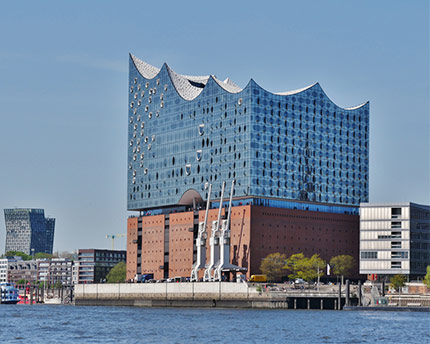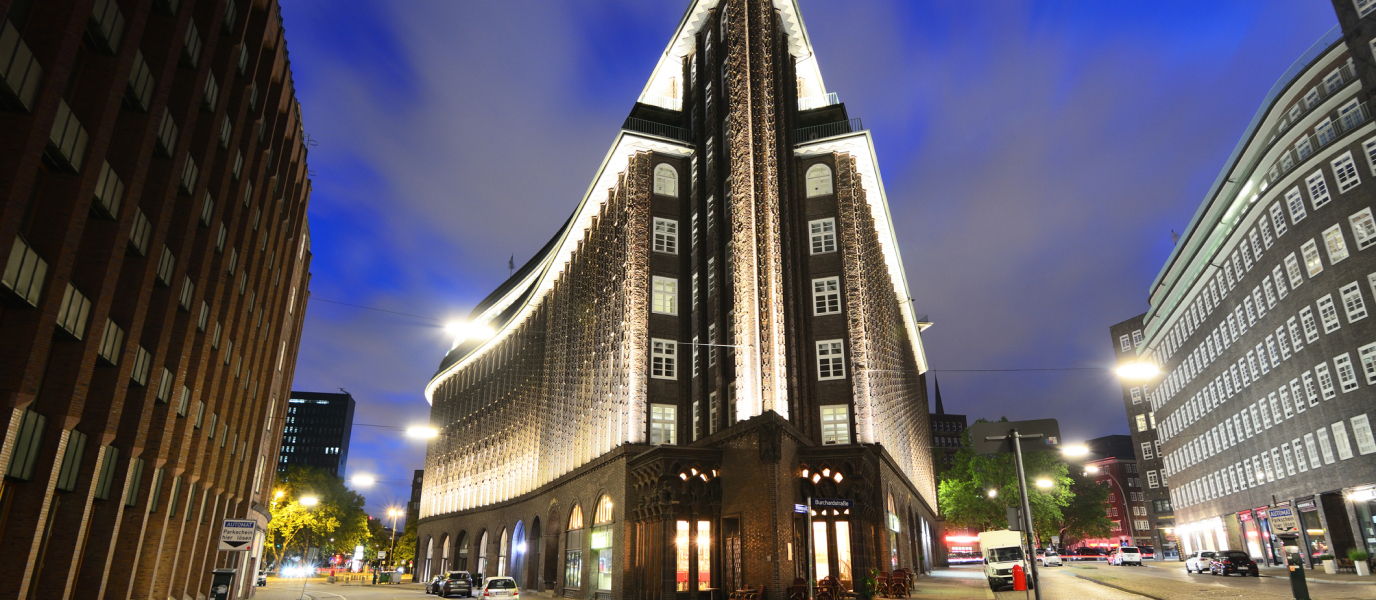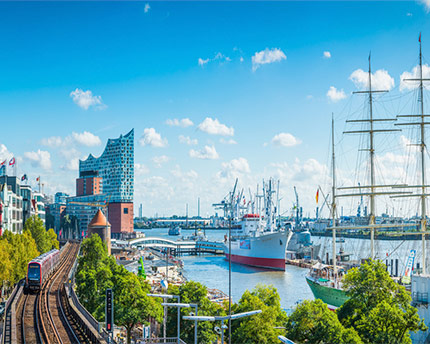Opened in 2017, the famous Hamburg Elbphilharmonie is one of the contemporary icons of the city of Hamburg. The Swiss studio of Herzog & de Meuron had some headaches and more than a few delays in producing this modern and attractive design, but the final result has impressed most people in Hamburg. The significance of the Philharmonie, or “Elphi” (from Elbphilharmonie Hamburg) as it’s known, lies not only in the architectural aspects (which we’ll discuss in the following sections) but also in its excellent acoustics. For such an important task, the Japanese Yasuhisa Toyota of Nagata Acoustics, who was also involved in the Walt Disney Concert Hall in Los Angeles and the Philharmonie de Paris, was brought in. The result is simply overwhelming.
Since its opening until now, almost four million spectators have passed through its concert halls and have been thrilled by its over three thousand concerts. That’s only inside the castle, because over 15 million visitors have come to admire the views from the viewing platform. These astonishing figures place the Elbphilharmonie on a par with great German tourist landmarks such as the world-famous Neuschwanstein Castle.
- Architectural style of this Hamburg landmark
- Visit the Elbphilharmonie
- What to see near the Hamburg Elbphilharmonie
- Where to stay in Hamburg
Architectural style of this Hamburg landmark
Newly created buildings can be a source of admiration, but those that are built on top of existing ones, complementing and respecting their history, are even more deserving of praise. Such is the case with the Elbphilharmonie, which was built on the site of an old harbour warehouse. The warehouse in question was the Kaiserspeicher and from its prime position it welcomed ships arriving in the city. The large, neo-Gothic building, the largest in the area, fell into disrepair during the Second World War and was converted into a warehouse on Dock A. For over 40 years, it was the place where the cocoa, tea, and tobacco cargoes were stored, but when the containers started to be used in the 1990s, the building was no longer needed.
You can imagine the next phase, the City Council set out to bring the old building back to life by building an unparalleled work of architecture dedicated to music. The Elbphilharmonie project has not tried to hide its history but has retained the lower part of the building, with the traditional red brick combination, and then added an astonishing 110-metre-high glass structure. The curved panels, divided into sections, reflect the water, the sky, and the city of Hamburg.
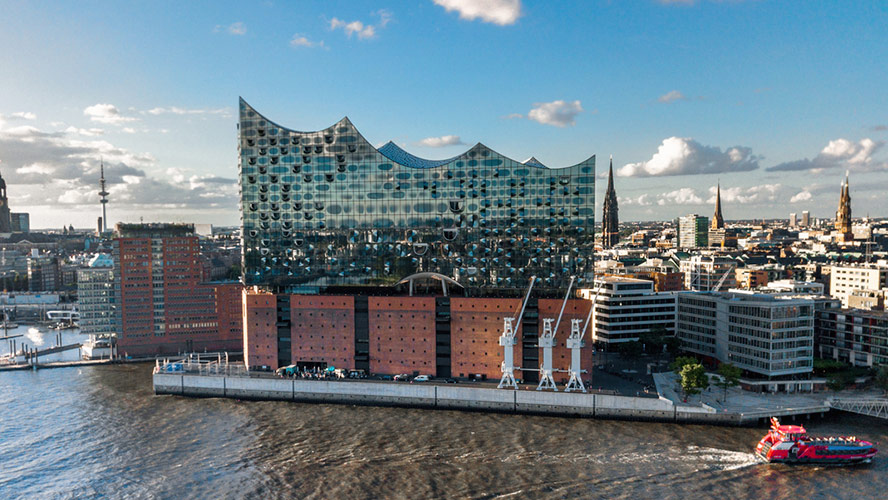
Visit the Elbphilharmonie
By now you’re probably looking forward to seeing the Hamburg Elbphilharmonie. Ideally, you should go to a concert to see the quality of its concert halls, but if you can’t, be sure to visit the interior. One of our favourite spaces is the Plaza, which is a platform located between the old and modern parts. This space functions as a viewing platform with 360º views of Hamburg. It’s about 37 metres high and is reached by the longest curved staircase in Europe. Once upstairs you can have a coffee or a snack from 10:00 to midnight (every day). There’s a small entrance fee. Another option is to go to its restaurant, where they serve exquisite cuisine with Nordic flavours.
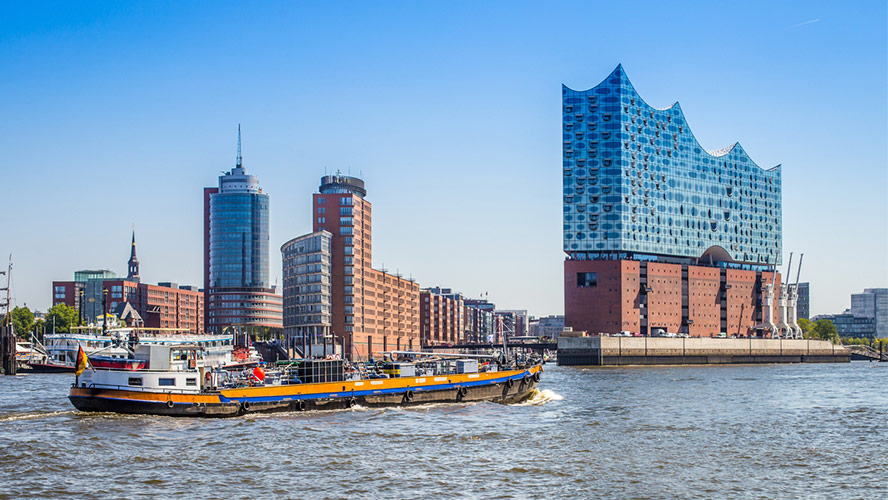
The concert halls don’t usually have tours, but you can ask at the ticket office. The two main ones are the Grand Hall and the Small Hall. The Grand Hall is located between the 12th and 16th floors, about 50 metres above ground, and can seat up to 2,100 spectators. The Small Hall, covered by elegant wooden panels, has a capacity for 550 people. Both were acoustically designed by Yasuhisa Toyota, as mentioned above. We mustn’t forget to mention another important space, the Kaistudio, which has an educational function and is available for young and old alike.
What to see near the Hamburg Elbphilharmonie
The location of the Hamburg Elbphilharmonie makes it possible to make a few interesting visits without having to spend a lot of time on them. You can start with a stroll along Deichstrasse, a beautiful neighbourhood where you can admire the half-timbered architecture. Continue strolling through Speicherstadt, the former warehouse district where goods arriving in the port of Hamburg were stored. And then, a little further on, is the Elbe Tunnel, an impressive feat of engineering that allows you to pass from one side of the river to the other at a depth of 25 metres. The views from the other side are breathtaking. And, of course, don’t forget to visit the Port of Hamburg and even take a boat trip to see it from the water.
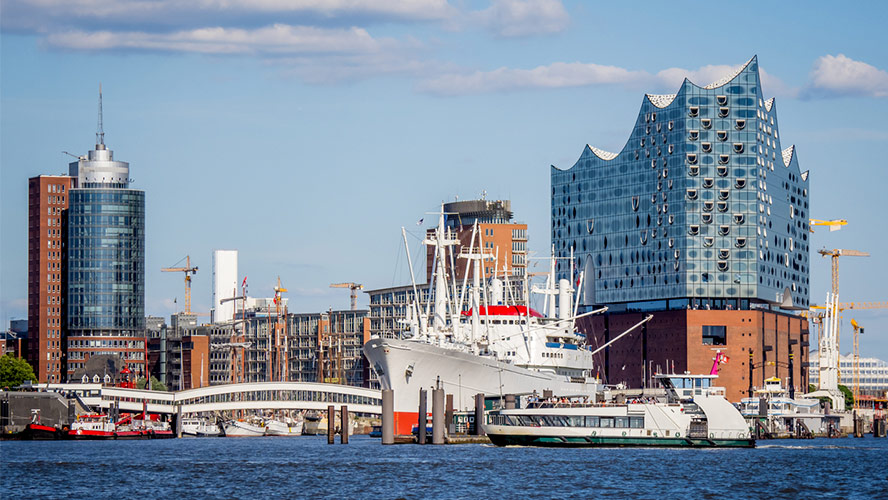
Where to stay in Hamburg
The city of Hamburg has some good hotels and one of them is the Barceló Hamburg. This modern four-star hotel is the ideal accommodation for exploring this vibrant German city. It has 193 B-rooms which are divided into different categories so you can choose the one that best suits your needs (Superior, Deluxe, Junior Suite, Suite, Family). The gastronomic offer also counts for a lot in this Hamburg hotel, and it’s worth staying for dinner one day in the 1700 restaurant to sample the delicious fusion cuisine. And, of course, also to try the carefully selected wines from their wine cellar.
Those who also enjoy taking care of themselves during their travels can make the most of the gym and spa.

























































